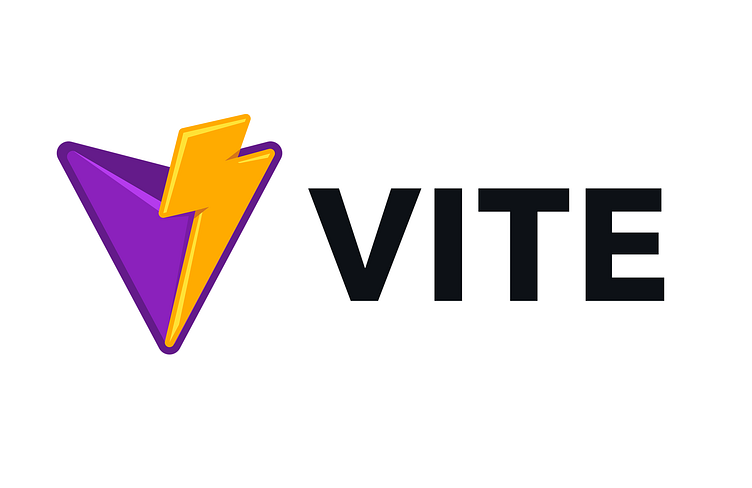The world of frontend development is in a perpetual state of evolution, driven by an unceasing quest for a better, faster, and more seamless developer experience. For years, Vite has been at the forefront of this movement, fundamentally changing how we think about development servers with its native ES module approach. It delivered lightning-fast Hot Module Replacement (HMR) and near-instant server start times, solving major pain points for developers. However, a subtle yet significant architectural division has always existed within Vite: it uses the blazing-fast, Go-based esbuild for pre-bundling dependencies during development but relies on the mature, JavaScript-based Rollup for production builds. This duality, while effective, introduces a parity gap and a performance ceiling. The latest Vite News signals a monumental shift to solve this very problem. Enter Rolldown, a new, Rust-based bundler written from the ground up with the ambitious goal of unifying Vite’s toolchain and unlocking an entirely new echelon of performance. This article delves into what Rolldown is, why it matters, and how it’s poised to impact the entire JavaScript ecosystem, from React News to the future of full-stack frameworks.
The Core Challenge: Unifying Vite’s Divided Toolchain
To fully appreciate the significance of Rolldown, we must first understand the problem it aims to solve. Vite’s current architecture is a clever combination of two best-in-class tools, but this hybrid approach isn’t without its trade-offs.
The Dev vs. Production Parity Gap
The most significant issue is the potential for inconsistencies between the development environment and the final production build. Because esbuild and Rollup have different parsing and bundling logic, developers can occasionally encounter bugs that only manifest after a production build. These are the most frustrating issues to debug—an application that works perfectly on `localhost` but breaks when deployed. This gap forces developers to be hyper-aware of the subtle differences between the two bundlers, adding a layer of cognitive overhead. The ultimate goal of any modern toolchain is to ensure that what you see in development is exactly what you get in production. Rolldown aims to close this gap permanently by becoming the single engine for all of Vite’s bundling needs.
Performance Ceilings in Large-Scale Applications
While Rollup is an incredibly powerful and flexible bundler with a rich plugin ecosystem, its performance can become a bottleneck in very large-scale applications or complex monorepos. As projects grow, with thousands of modules and complex dependency graphs, the time it takes to create an optimized production build can stretch into several minutes. This directly impacts developer productivity and slows down CI/CD pipelines, delaying deployments. The latest Next.js News and Remix News often revolve around build performance, highlighting this as a critical area of focus across the industry. By leveraging the performance of Rust, a systems-level language known for its speed and memory safety, Rolldown is designed to smash through these existing performance ceilings.
A Look at a Standard Vite Configuration
A typical Vite project for a React application showcases this duality. The configuration file specifies plugins and build options that are ultimately processed by Rollup during the `vite build` command. Rolldown’s design goal is to be compatible with the Rollup plugin API, ensuring a smooth transition for the vast ecosystem.
import { defineConfig } from 'vite';
import react from '@vitejs/plugin-react';
// https://vitejs.dev/config/
export default defineConfig({
plugins: [react()],
// The 'build' options are primarily for Rollup
build: {
outDir: 'dist',
sourcemap: true,
rollupOptions: {
// Rollup-specific options go here
output: {
manualChunks(id) {
if (id.includes('node_modules')) {
return 'vendor';
}
}
}
}
},
server: {
port: 3000,
open: true,
},
});Rolldown in Action: A Glimpse into Future Performance
Rolldown is not just an incremental improvement; it represents a quantum leap in build performance. By rewriting the bundler in Rust, the Vite team can leverage multi-threading and low-level system optimizations that are simply not possible with JavaScript. The early performance indicators are staggering, suggesting build time reductions of 5 to 10 times compared to the current Rollup-based setup.

What Does “Performance” Mean Here?
In the context of a bundler, performance encompasses several key metrics:
- Cold Build Time: The total time it takes to create a production-ready bundle from scratch. This is the most critical metric for CI/CD pipelines.
- Caching and Incremental Builds: How quickly the bundler can produce a new build when only a few files have changed. Efficient caching is key to fast rebuilds.
- Memory Usage: A more efficient bundler consumes less memory, which is crucial in resource-constrained CI environments and for developers working on less powerful machines.
For a developer working on a complex application using libraries like React Query for data fetching or Framer Motion for intricate animations, a faster build means a tighter feedback loop. Instead of waiting minutes for a build to complete, they can get feedback in seconds, dramatically improving productivity and reducing friction.
Conceptual Performance Comparison
While Rolldown is not yet integrated into Vite for public use, we can conceptualize how a performance test might look. The following shell script illustrates the dramatic difference in build times that Rolldown promises to deliver. This is the kind of improvement that will be a game-changer for large projects, whether they are built with Gatsby News-worthy static site generators or complex client-side applications.
#!/bin/bash
echo "--- Building project with current Vite (using Rollup) ---"
# Measure the time it takes for the standard production build
time npx vite build
echo "\n"
# --- HYPOTHETICAL FUTURE COMMAND ---
# This command is for demonstration purposes to illustrate the future state.
echo "--- Building project with future Vite (using Rolldown) ---"
# The '--bundler' flag is hypothetical, but represents the core idea
time npx vite build --bundler=rolldown
# Expected output would show the Rolldown build completing in a fraction
# of the time taken by the Rollup build.The Ripple Effect: Rolldown’s Impact on the JavaScript Ecosystem
The introduction of a high-performance, unified bundler within Vite will send ripples across the entire JavaScript and React landscape. This isn’t just Vite News; it’s a development that will influence toolchains, frameworks, and best practices for years to come.
Raising the Bar for Frameworks and Tooling
Frameworks like Next.js, with its Rust-based Turbopack, have already signaled a shift towards high-performance, non-JavaScript-based tooling. Rolldown is Vite’s powerful answer in this new era. This healthy competition benefits all developers. Frameworks like RedwoodJS, Blitz.js, and Razzle, which often build upon or integrate with tools like Vite, will be able to pass these performance gains directly to their users. The development experience for complex state management solutions will also improve; the latest Redux News and Zustand News often focus on developer tooling, and faster builds make debugging and iterating on complex stores with libraries like Jotai or MobX far more pleasant.
Enhancing the Testing and Component Development Workflow
The benefits extend directly to testing and component-driven development. Tools like Storybook, which often have their own build process, can become slow in large component libraries. A faster underlying bundler means Storybook will start faster and rebuild more quickly. Similarly, end-to-end testing frameworks like Cypress and Playwright often require a production-like build of the application before running tests. Drastically reducing this build time means CI checks complete faster, allowing teams to ship with more confidence and speed. This is significant for the entire testing ecosystem, from the latest React Testing Library News to trends in visual regression testing.
Ensuring a Smooth Transition with Plugin Compatibility

One of Rollup’s greatest strengths is its extensive plugin ecosystem. The Vite and Rolldown teams have wisely made Rollup API compatibility a primary goal. This means that the vast majority of existing Vite plugins should work with Rolldown with minimal to no changes. This is crucial for a smooth transition and ensures that developers can adopt the new engine without having to rewrite their entire build configuration. The example below shows a more complex Vite config with plugins, which Rolldown aims to support seamlessly.
import { defineConfig } from 'vite';
import react from '@vitejs/plugin-react';
import { visualizer } from 'rollup-plugin-visualizer';
import svgr from 'vite-plugin-svgr';
// This configuration uses multiple plugins. Rolldown's goal is to maintain
// compatibility with the Rollup plugin API, making the transition seamless.
export default defineConfig({
plugins: [
react(),
svgr(), // Plugin for handling SVGs as React components
visualizer({ open: true }), // Plugin to analyze bundle size
],
build: {
rollupOptions: {
output: {
// Advanced code-splitting strategy
manualChunks: {
'react-vendor': ['react', 'react-dom', 'react-router-dom'],
'apollo-vendor': ['@apollo/client', 'graphql'],
'ui-library': ['@mui/material'],
},
},
},
},
});Getting Ready for the Rolldown Revolution: Best Practices
While Rolldown is still under active development, developers can start preparing for its eventual integration into Vite today. Adopting best practices now will ensure a smooth transition and allow you to take full advantage of the performance gains as soon as they become available.
Keep Your Dependencies Current
The most important step is to keep your project’s dependencies, especially Vite itself and its related plugins (`@vitejs/plugin-react`, etc.), up to date. The Vite team will handle the integration of Rolldown, and the latest versions of the packages will be the first to receive these updates. Regularly running `npm update` or `yarn upgrade` and checking for major version changes is a crucial habit.
{
"name": "rolldown-ready-app",
"private": true,
"version": "0.0.0",
"type": "module",
"scripts": {
"dev": "vite",
"build": "tsc && vite build",
"lint": "eslint . --ext ts,tsx --report-unused-disable-directives --max-warnings 0",
"preview": "vite preview"
},
"dependencies": {
"react": "^18.2.0",
"react-dom": "^18.2.0"
},
"devDependencies": {
"@types/react": "^18.2.43",
"@types/react-dom": "^18.2.17",
"@typescript-eslint/eslint-plugin": "^6.14.0",
"@typescript-eslint/parser": "^6.14.0",
"@vitejs/plugin-react": "^4.2.1",
"eslint": "^8.55.0",
"eslint-plugin-react-hooks": "^4.6.0",
"eslint-plugin-react-refresh": "^0.4.5",
"typescript": "^5.2.2",
"vite": "^5.0.8" // Always aim to be on the latest stable version of Vite
}
}Follow Official Channels and Embrace API Standards

Stay informed by following the official Vite blog, Twitter account, and GitHub repository. As Rolldown matures, these will be the primary sources for announcements, migration guides, and experimental flags. Additionally, when writing custom Vite plugins or configurations, stick to the documented public APIs. Avoid relying on internal or undocumented features of Rollup, as these are the most likely to change or become incompatible during the transition.
Thinking Beyond the Web
The push for high-performance tooling is not confined to the web. The React Native News and Expo News cycles are also filled with discussions about improving build times and developer feedback loops with the Metro bundler. While Rolldown doesn’t directly target React Native, its success will raise the performance bar for the entire JavaScript ecosystem. The innovations in web tooling often inspire similar advancements in the mobile space, benefiting developers working with UI libraries like React Native Paper, NativeBase, or Tamagui, and navigation tools like React Navigation.
Conclusion: A Faster, More Cohesive Future
The development of Rolldown is unequivocally the most exciting Vite News in recent memory. It represents a bold and necessary step towards a future where frontend tooling is not just fast, but also consistent, reliable, and free of friction. By aiming to replace both esbuild (for dev) and Rollup (for prod) with a single, Rust-powered engine, Vite is poised to solve the dev/prod parity problem once and for all while delivering an order-of-magnitude performance boost for production builds.
For developers across the ecosystem, this means faster CI/CD pipelines, more productive development sessions, and the ability to build larger, more ambitious applications without being hindered by tooling. The journey to a stable, fully-integrated Rolldown is just beginning, but its promise is clear: a faster, simpler, and more powerful foundation for the next generation of the web. Keep a close watch on this space—the future of frontend development is being compiled, and it’s happening at unprecedented speed.











